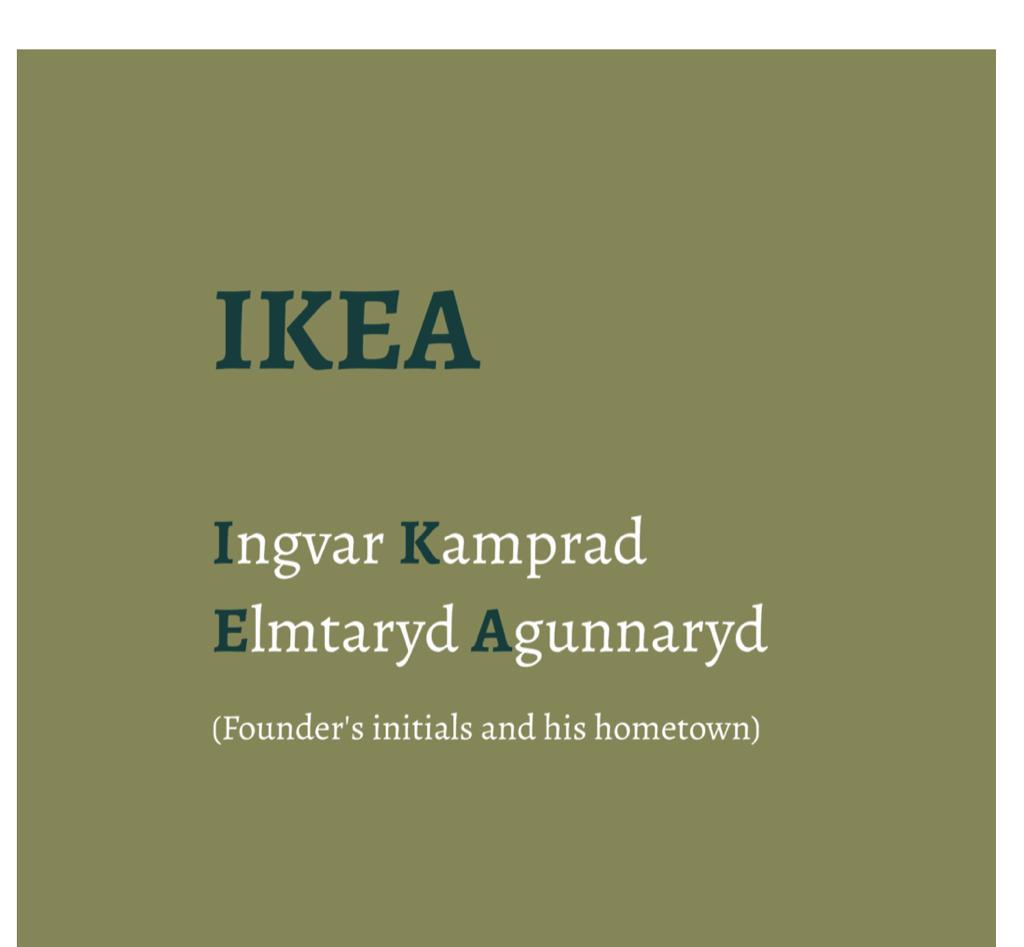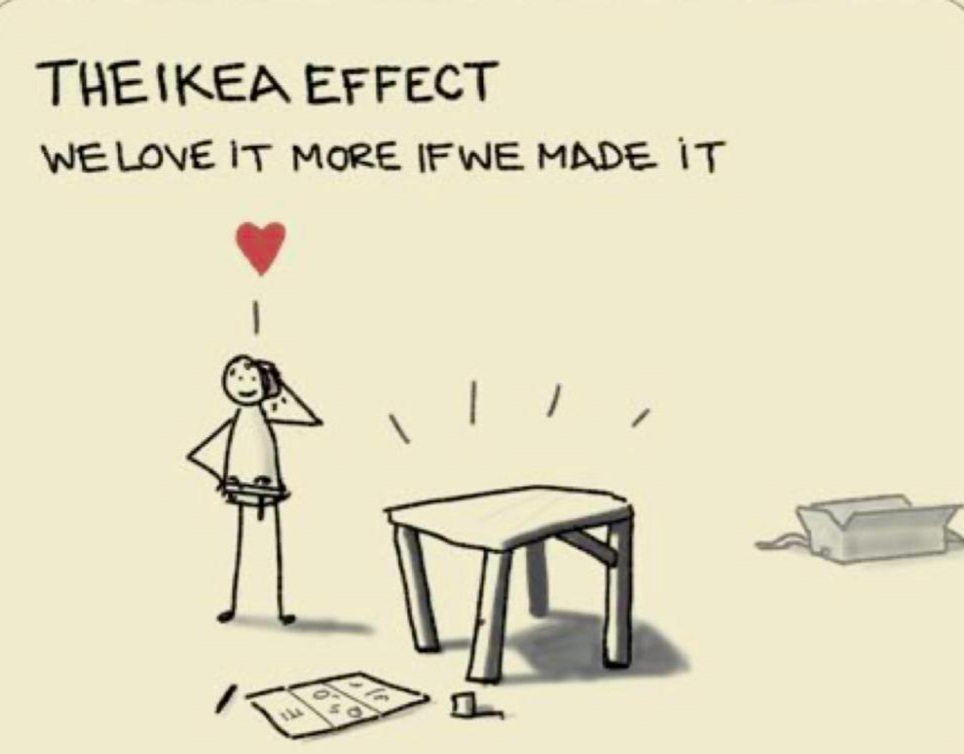Ikea and the Ikea effect

Whoever has strolled through the tastefully decorated stalls of the furniture giant IKEA can vouch for their overwhelming feeling of awe and enthrallment that is hard to hide.
Aesthetically designed pleasing home interiors, brilliant organising ideas for small spaces, innovative and ergonomic fixtures and appliances, the list of striking layouts and concepts goes on.
The urge to splurge and empty one’s pocket is overpowering. You behave like a child in a toy shop, yearning to get hold of everything you come across.
The founder and the brand
Swedish furniture retailer Ingvar Kamprad founded IKEA. Most successful entrepreneurs share a cliched script, fighting against all odds and adopting a less agreeable or a visionary approach that made them stand out.
The word IKEA is the abbreviation for Ingvar Kamprad Elmtaryd Agunnaryd.

Elmtaryd, his family farm, Agunnaryd, the place where he was raised
Business insights
Kamprad’s business insights were based upon his observation and realisation of the simple fact that fully assembled furniture costs more money.
First, the money spent while assembling and fixing them. Secondly, the finished product will be large and heavy, which requires vast space and hence demands extra shipment charges on transportation.
His innovative approach was to transport and sell furniture as flat pieces of squares and rectangles that could be easily transported in boxes, which reduced the shipment and assembly charges.
During the late 50s, outraged by Kamprad’s strategy that lowered the prices, his competitors started to boycott IKEA.IKEA was in trouble.
When you have nothing left to lose
Kamprad decided to shift his work base to Poland, where wood was aplenty, and labour was cheap. A kind of outsourcing. But Poland during the early 1960s being a Communist country with no adequate infrastructure or trained personnel was not a favourable alternative, but Kamprad stood by his decision.
From frying pan to fire
Around that time, the Cold War was brewing up. Kamprad could have been easily labelled as a traitor for choosing Poland over the West. But nothing could stop him from fishing in troubled waters. The rest is history.
Experts say
Andres Asulund, a fellow at the Peterson Institute for International Economics, says
That’s why he succeeded where others failed. He went out to these unpleasant places and made sure things worked. He’s an extremely stubborn character and is a micromanager.
Strategies for retailing
Currently, Ikea’s success is reflected in its number of showrooms spanning across the continents.

One of their marketing strategies that involve the customer in the process of assembling and building, the so-called Build it yourself projects, has been a success with the consumers.
Build it yourself projects
The excitement and joy the grown-ups feel for their build it yourself projects is no different than the enthusiasm kids experience near their toy building blocks.
People were willing to accept the challenges of assembling pieces of wood or screwing a few nuts and bolts with the passion of solving a puzzle.
Generally, the furniture was difficult to put together, and instructions manuals were challenging to follow, or they had to redo the process multiple times. Yet nothing would deter people from pursuing the chore.

Instead, they took extreme pride in the final finished product and expected others to appreciate their craftsmanship with much enthusiasm.
This kind of human nature, ascribing more value to their creations, have given rise to a new cognitive bias, known as the IKEA effect.
A cognitive bias named after a brand
IKEA effect is a cognitive bias that was coined by Michael Norton, Daniel Mochon and Dan Ariely in 2012 in their published work: The IKEA effect: when labour leads to love.
They described the IKEA effect as labour alone can be sufficient to induce greater liking for the fruits of one’s labour: even constructing a standardised bureau, an arduous, solitary task can lead people to overvalue their creation.
Labour and love, Dan Ariely’s conclusions
Dan Ariely, in his book, The upside of irrationality, narrates the four principles of labour and love.
The effort that we put into something does not just change the object. It changes us and the way we evaluate the object.
Greater labour leads to greater love for the creation.
Our over-evaluation of the things we make runs so deep that we assume that others share our biased perspective.
When we can not complete something into which we have put great effort, we don’t feel so attached to it.
Human traits
Pride of creation and ownership runs deep in human behaviour. We become attached to the things that we invest efforts in creating, and we start over evaluating them.
This bias is not restricted to assembling and fixing a few furniture but extends to other areas of our life as well.
The pleasure behind DIY projects
Suppose you are baking a cake from scratch. Then you will take full credit for it, often bragging about its trivial details to the extent of annoyance. Consider you decide to bake a premixed cake mix where the effort you put is much minor; still, you boast about your efforts—the greater the labour, the greater the love.

The same applies to your other creative works like painting, writing, sculpture, gardening, DIY projects etc.,
By doing so, people are encouraging their self-efficacy and creativity.
Positive application
Some of the positive applications of this bias include involving your children in your cooking or gardening activities. Once they make an effort to do so, they would value the final products. Studies show this approach encourages them to increase their intake of vegetables and healthy salads.
Endowment effect vs the Ikea effect
The Ikea effect is closely related to the endowment effect, where people value their belongings more highly.
When you plan to sell your car or home, the asking price offered will be on the higher side than the buyer’s quote.
Your belongings are more valuable to you as you mentally add a few other values and sentiments to them that are not apparent to others. The home you or your children grew up with, the first car you bought with your savings, this kind of emotional attachment automatically enhances its value.
The Ikea effect is different in that it is the fruit of one’s labour.
A biased society
Next time, when you come across someone taking extra enjoyment in their creativity and is talking excitedly about it, or when you have the urge to brag about your creations, remember, you are not alone. This cognitive bias is pervasive in our society.




